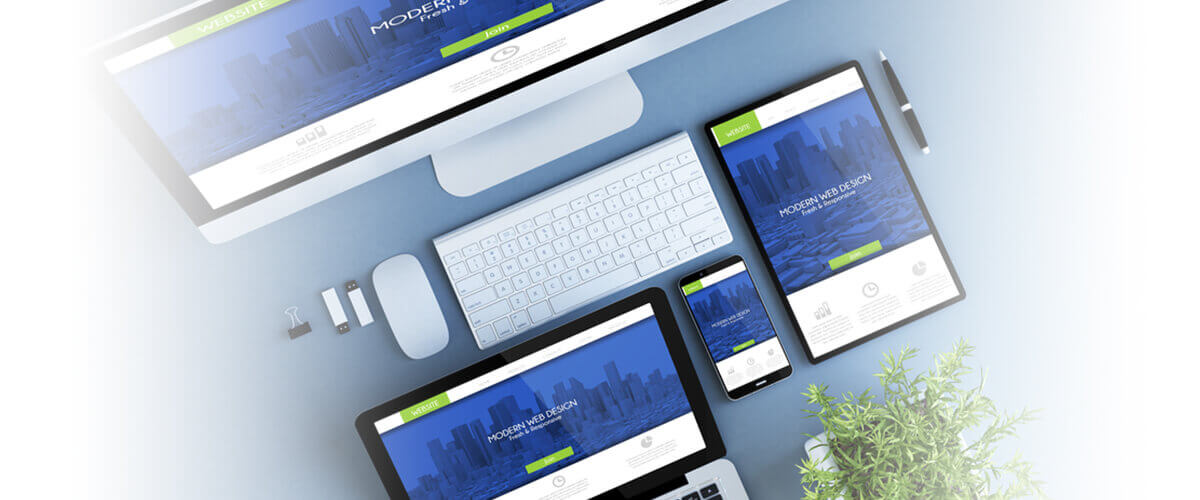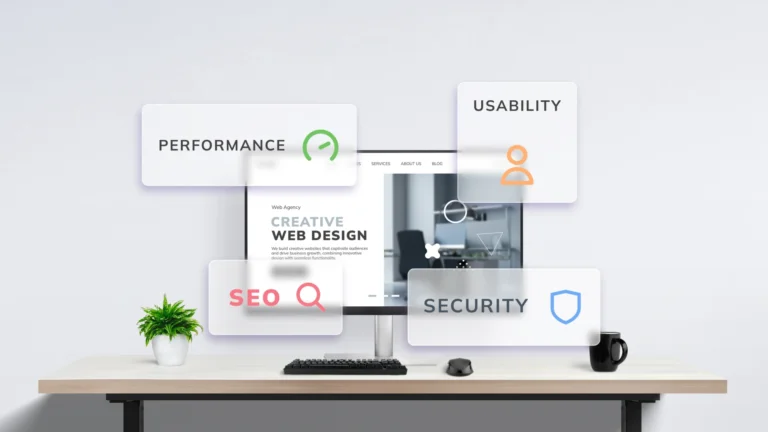Is your website design secretly undermining all the time, effort, and energy you’ve put into SEO? After all, web design is really all about aesthetics, not SEO, right?
Wrong.
In reality, there are numerous ways web design can affect SEO performance. Yes, it’s fun picking out pretty colors and a cool layout. But building a website design that drives SEO and creates a superior user experience takes so much more than just aesthetics.
Don’t worry—we’re breaking down the most important aspects of web design and how you can prevent your website from sabotaging your SEO performance.
Here’s what you’ll learn:
- How your web design choices might be quietly tanking your SEO (and what to do instead)
- Why user experience—not just pretty visuals—plays a bigger role in search rankings than you think
- Six design fixes that boost SEO performance without sacrificing aesthetics
- The real reason mobile-first design and site speed are non-negotiable for visibility
- How to spot (and stop) common self-sabotaging design decisions before they hurt your traffic
@connectivewebdesign 6 ways your web design could be affecting your SEO 👀 #digitalmarketing #digitalmarketingagency #digitalmarketingtips #digitalmarketingexpert #digitalmarketingstrategy #digitalmarketingstragegist #seo #seotips #seomarketing#seospecialist #seomarketingtips #internetmarketing#marketingstories #marketingtip #webdesign #seotipsandtricks ♬ Sunroof – Nicky Youre & dazy
Is your website actually working against you? How web design impacts SEO performance
We’ve all seen them: spammy websites overrun with ads, slow-loading pages with broken images and links, videos trapped in the purgatory of endless buffering, and worse.
Obviously, websites with serious faults like those have zero chance of ranking highly in the search engine results pages (SERPs).
But what if you’re one of those people who does spend time and money developing a quality website design and SEO strategy? Here’s a chilling thought: what if that website so lovingly created was actually hurting your SEO performance instead of helping it (and you were none the wiser)?
I hate to say it, but this form of website self-sabotage is more common than you might think. Without properly optimizing your website’s structure, design, and layout, you’re getting in the way of your own progress.
If you just felt a stab of panic at the scenario I just described, it’s okay. I’m going to break down six key ways web design affects SEO and, more importantly, what your main priority needs to be when building your website (hint: it’s not SEO!).
1. Prioritize visual quality over quantity
To clarify what I said earlier about aesthetics, it is a critically important aspect of web design, but it’s not the only one. In a world where it only takes people 0.05 seconds (50 milliseconds) to form an opinion of your website, its initial visual impact is quite literally the “make it or break it” factor.
However, the secret to visual content is quality, not quantity. When I say visuals, that includes a wide range of different content, including:
- Stock photographs
- Original content (OC) photographs
- Videos
- Digital art
- Hand-drawn illustrations and art
- Graphic designs
- GIFs
- Infographics
- Memes
- Screenshots
- Branded images and logos
- Diagrams, charts, and graphs
- Animation
Optimizing visual content quality supports SEO performance
Of course, visual content is beneficial for its aesthetic value, but here’s the real deal: high-quality visual content keeps users on your website for longer.
In turn, that contributes to SEO by driving more traffic and boosting conversions. Also, visual content quality is an influential ranking factor for Google when determining hierarchy in the SERPs.
To optimize and improve the quality of your site’s visual content, you can:
- Resize or compress image size
- Create short, descriptive file names and alt tags
- Make all images mobile-friendly
- Use a straightforward image title with primary keywords
- Include a caption on all images
High-quality visuals don’t just look good—they keep users on the page longer, boost browsing, and build trust. That’s SEO gold.
2. Speed is a ranking factor—period
Google has remained tight-lipped about most of the 200+ ranking factors that make up its algorithm, with a few exceptions. One of those exceptions is page speed. Google is consistently vocal regarding the importance of page loading times as a ranking factor.
Let’s be real—nothing kills trust faster than a slow, blank screen that never loads.
Not only does slow page speed hurt user experience, but it can actually cost you money. According to Google, the probability of page bounce increases by 32% if your loading time goes from one second to three seconds.
For eCommerce businesses, sites that load in one second had a 2.5 times higher conversion rate than sites with a five-second load time. Four seconds and your profits will sink like a rock.
Thankfully, you can increase page speed with a few simple actions:
- Use a mobile-first layout (more on that in a bit)
- Compress text and image file size
- Minimize JavaScript and CSS
- Utilize lazy loading
- Invest in a faster hosting provider
- Ditch those unused plugins
- Install helpful speed-optimization plugins
3. Simplify navigation to help Google (and users)
Another of the many ways web design can affect SEO is page navigation. Honestly, people browsing your website shouldn’t need a GPS to get where they’re going.
The navigational structure of your site directly affects several key SEO metrics, including:
- Conversion rate
- User experience
- Bounce rate
- Length of page stay
- Engagement rate
When your website has a simple, user-friendly structure, page visitors can find what they need quickly. Plus, it makes it easier for search engine crawlers to index your page, boosting SEO.
Keep your site layout and main menus short and sweet
When developing website design and layout, keep it simple; this isn’t the place to buck the tide. Use an intuitive format and easily recognizable icons, like a magnifying glass for the search bar.
You can make your site easier to navigate by following these tips:
- Include a search bar in the header of every page.
- Use simple terms and phrases in the main menu; avoid technical jargon.
- Avoid overloading your main menu with options.
- Make your main menu a sticky button for easy access.
- Include internal links and descriptive anchor text.
- Use short and simple URLs that describe the main topic or purpose of the page.
Plus, using a short, concise main menu increases your chance of snagging a spot in the rich results, which boosts your credibility, visibility, click-through rate, and organic traffic.
4. Design for engagement, not just aesthetics
The sheer amount of information available at our fingertips is often an irresistible siren song. Many times, I’ve searched online with the intent of only spending a few minutes browsing. The next thing I knew, I had passed two hours down the rabbit hole in what seemed like a mere 15 minutes.
By leveraging website design and structure, you can lead users down the same rabbit hole and increase pages per visit, improve engagement rates, and boost length of page stay.
In 2022, Google rolled out the Helpful Content update to its algorithm. It rewards websites with helpful and valuable content written “by people, for people.”
So, when users browse for a long time, it tells Google that your site provides value, has compelling information, and is a trustworthy, authoritative source. Basically, it gives you a sweet, sweet SEO boost.
Use internal links to increase average pages per visit
To increase pages per visit and length of stay, you need plenty of internal links that direct users to other related pages on your site. Google uses those internal links to evaluate the relationship between your content and determine which pages are the most important. Consider using the skyscraper technique to build a strong backlink profile for your website.
Next, you should have high-quality, relevant, and useful content. The primary objective should be providing value to the reader or solving their pain points, not just SEO.
In addition, consider adding interactive and visual content, like videos and infographics. For blog posts and articles, long-form, and pillar content provide the biggest benefits to SEO.
With a clean, simple, and user-friendly website design, quality content, and internal links, you can strengthen the results of your SEO strategy for maximum performance.
5. Make mobile your starting point
With over five billion unique mobile internet users in 2022, it makes sense that over 60% of total web traffic originates from a mobile device.
The number of mobile internet users has grown steadily, which is a fact Google picked up on years ago. In light of this, the search engine giant switched from desktop to mobile-first indexing.
Google’s search engine crawlers now index the mobile version of websites first, which has a greater impact on your ranking and SEO performance than your desktop site.
Basically, if your website doesn’t have a mobile version with a responsive layout, you’re causing significant damage to your SEO score by completely dropping the amount of traffic you’d be able to receive. A responsive website will automatically render its layout, screen size, orientations, resolution, and interactive elements to fit the user’s device of choice.
Having a responsive website is essential to ensure a positive user experience, easy site navigation for mobile users, and a solid SEO score. In fact, the best way to address this powerful ranking factor through web design is by creating the mobile version first, then using it to build the desktop version.
Are you curious to find out just how responsive your site is? Check out Google’s Mobile-Friendly Tool, which you can use to test the mobile-friendliness of your website for free.
6. Ditch spammy ads and pop-ups
Many business owners and web admins make money from third-party website advertisements. However, there’s a big difference between subtle advertisements and websites that aggressively inundate users with flashing ads and spammy elements. And let’s not even talk about the obnoxious pop-ups that are near impossible to dismiss.
Google may be secretive about its ranking factors, but it’s a well-known fact that “top-heavy” websites will rank poorly. If you’re not familiar with the term, top-heavy websites have a large majority of ads above the fold and on the headers of pages, forcing users to scroll past them to reach the main content.
To prevent a negative user experience and the inevitable harm it causes to your SEO score, avoid these poor web design and advertisement practices:
- Pages with top-heavy ads and a high ad density
- Ads that pop up over the page’s main content
- Videos that autoplay when the page loads
- Ads that mislead users into clicking on them
- Pages that force users to click through multiple pages or slideshows to see the whole content
- Using hidden content, paid links, or stuffing keywords
The main takeaway: User experience is the top priority (yes, even over SEO!)
As we just discussed, there are many ways web design can affect SEO performance, and it goes far beyond its aesthetic value. Of course, merging website design with your SEO strategy takes time, effort, and skill, which is why many businesses outsource this critical responsibility to a team of professional SEO experts.
However, here’s the main takeaway: user experience needs to be the star of the show, with SEO playing the supporting role. With a user-centric web design reinforced by a strong yet subtle SEO foundation, you’re setting the stage for a high-performance strategy and, ultimately, more money in your pocket.













